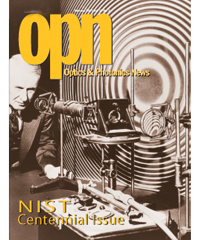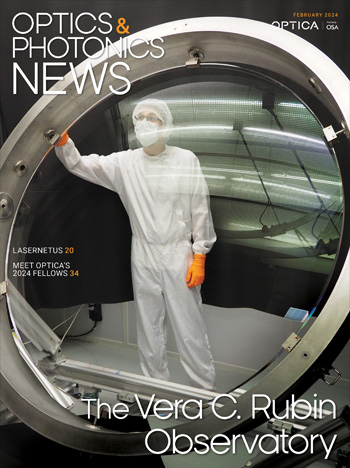Feature Articles
Radiometry Sensing the World
This article describes some of the methods developed to make accurate measurement of light a reality. We describe three ongoing research programs aimed at establishing measurement chains between fundamental optical flux measurements and the more practical quantities of commercial and scientific interest: spectral irradiance, spectral radiance, and radiance temperature.
by Steven W. Brown, B. Carol Johnson, and Keith R. LykkeAdvanced Optics Characterization
Science, commerce, and defense continuously drive the optical community to provide less expensive, more perfect products. High-performance optical systems demand increasingly tighter tolerances, and tighter tolerances drive the need for ever better metrology. Aspheric optics, shorter wavelengths, and resonant systems all enable high performance: they also make the metrologist’s life more difficult. Two of the recent drivers of tighter optical tolerances have been extreme ultraviolet lithography (EUVL) and the Laser Interferometric Gravitational Wave Observatory (LIGO).
by Angela Davies, Charles Tarrio, and Chris EvansOptical Properties of Materials: A Sampling of NIST Contributions
Optics has a wide range of applications in industry and science, and the properties of the materials that make up optical instruments are key to their effectiveness. Over the past century, optical instruments have increased in sophistication and performance. The National Institute of Standards and Technology (NIST) plays an essential role in optics development by providing information on the optical properties of various materials.
by Thomas A. Germer, Rajeev Gupta, Leonard M. Hanssen, and Eric L. ShirleyA New Era of Frequency Standards and Optical Frequency Measurement
Recent advances in laser cooling and trapping technology have led to a hundredfold enhancement in resolution using the atomic fountain technique.
by John L. Hall, JunyePulsed-Laser Metrology at NIST
As new laser applications continue to develop, measurement accuracy has become an even more critical issue. Demands for improved accuracy have led to new NIST laser standards and measurement techniques, as well as to increasing diversity of the group of calibration customers. The NIST laser calibration services support a variety of detectors, including thermal and semiconductor devices, and span a wide range of laser powers and energies. The NIST customer base now includes detector and laser manufacturers around the world: standards laboratories, research facilities, military sites, and laser instrument manufacturers.
by Marla Dowell

![A multiplexed image of a human tonsil acquired. [NIAID] using the iterative bleaching extends multiplexity (IBEX) method.](https://opnmedia.blob.core.windows.net/$web/opn/media/images/articles/2024/0424/departments/202404-cover-web.jpg?ext=.jpg)

